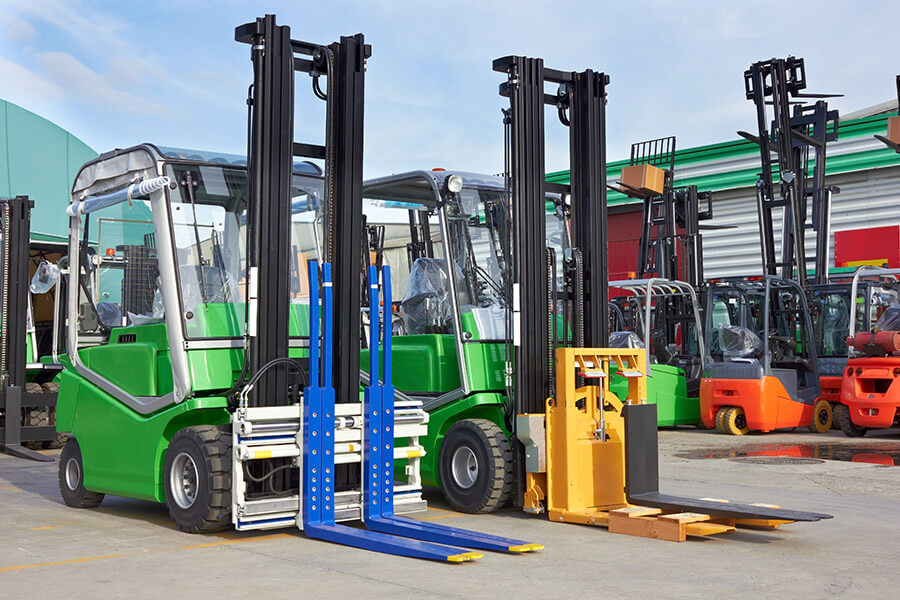There are seven classifications of forklifts. Before operating a vehicle, a driver must be certified in its specific class. Let’s take a look at the various forklift types with pictures.
Warehouse managers and fleet operators have various options for matching material handling equipment to their specific needs. Just as there are many different warehouse storage systems, many kinds of forklifts are also available. For example, there are lifts designed for narrow aisles, rough terrain or extremely heavy loads. However, there is one thing all these machines have in common: they all fall under one of seven OSHA classifications.
OSHA (the Occupational Safety and Health Administration) developed seven classifications of powered industrial trucks (their term for forklifts) to protect workers. According to an OSHA document, “The hazards commonly associated with powered industrial trucks vary depending on the vehicle type and the workplace where the truck is used. The best way to protect employees from injury also depends on the type of truck operated and worksite where it is being used.”
Let’s review the seven OSHA classes and some forklift models names under each classification. We’ve also included some types of forklifts pictures to make identifying the 7 different types of forklifts easier.
Class I: Electric motor rider trucks
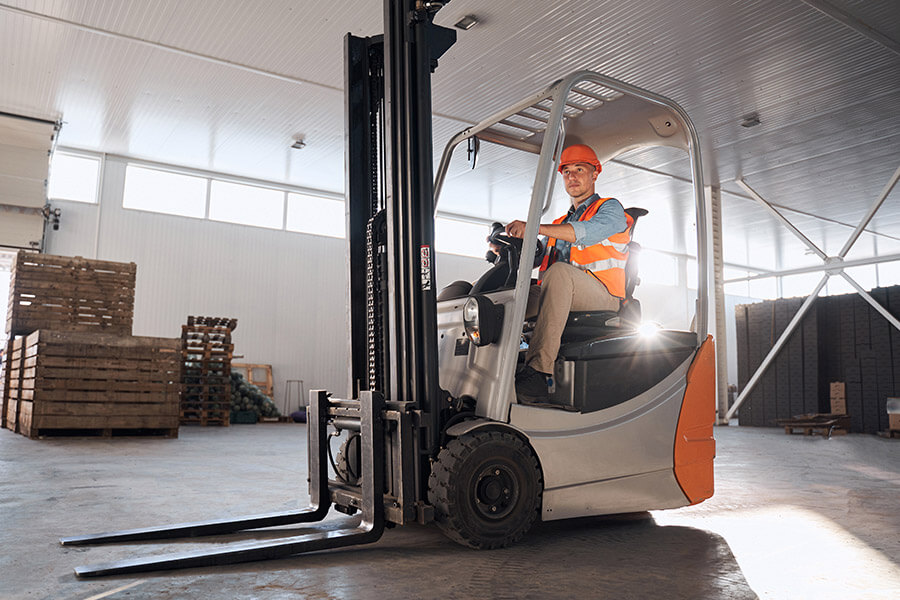
All Class I forklifts have an electric motor powered by an industrial battery. A Class I vehicle is typically an indoor forklift because it is quieter than internal combustion (IC) forklifts and does not emit exhaust fumes. Most Class I forklifts have a lifting capacity of at least 8,000 pounds.
Class I vehicles are often called “counterbalanced forklifts” because the heavy battery that powers the vehicle and additional counterweights help keep the truck level while lifting and moving heavy loads. Because Class I trucks are best suited for flat, indoor surfaces, they typically utilize cushion tires designed for smooth floors. When a Class I vehicle is used for light outdoor duty, the vehicle employs pneumatic tires.
Four-wheel counterbalance forklifts
These Class I vehicles are what everyone pictures when they think of warehouse forklifts. Four-wheel counterbalanced forklifts have a three-point suspension system that helps distribute the vehicle’s weight. Two of these three points are the front tires, and the third is the pivot point between the rear wheels on the back axel. The area between these three points is “the stability triangle.”
The vehicle remains balanced as long as a forklift’s center of gravity stays within the stability triangle. Once a forklift picks up a load, the center of gravity moves toward the front of the vehicle. The rear counterweight helps offset the weight of the load and prevents the vehicle from becoming unbalanced.
There are stand-up and sit-down varieties of four-wheel counterbalance forklifts.
Three-wheel counterbalance forklifts
Three-wheel counterbalance forklifts are extremely similar to their four-wheel counterparts. The main difference is the single wheel in the rear of the truck. This configuration gives the vehicle a great deal of maneuverability over a four-wheel truck, which requires a lot of space to make turns. That’s why these vehicles are used in warehouses with tight spaces.
Three-wheel counterbalance forklifts also utilize the stability triangle principle, except that all three tires serve as the points of the triangle.
Examples of Class I forklift model names include Mitsubishi Forklift Trucks Class I, Caterpillar Lift Trucks Class I and Toyota Material Handling Class I.
Class II: Electric motor narrow aisle trucks
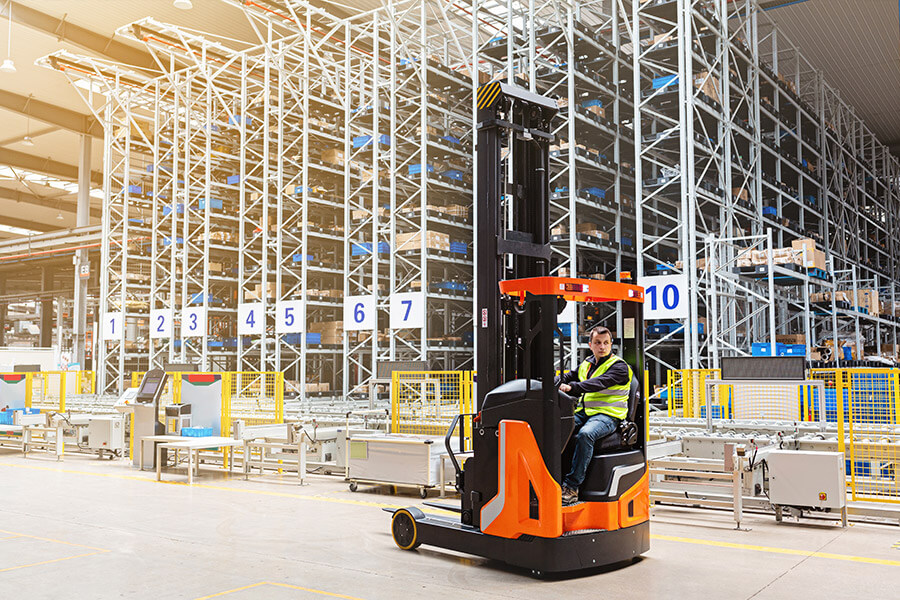
Built for small spaces, narrow aisles, efficiency and speed, Class II forklifts use cushioned tires designed for smaller warehouses. Many Class II vehicles are highly specialized or include attachments to adapt them for specific work. Because Class II is primarily an indoor forklift, an electric motor powers these machines, and most are stand-up models due to their compact nature. Class II vehicles have a typical load capacity of 1,500 to 5,000 pounds.
Order pickers (aka, cherry pickers)
The job of most order pickers is to lift the operator instead of a heavy pallet. The operator travels a warehouse, rising and lowering as needed, to grab one or two inventory units at every stop. These machines are incredibly efficient because they raise and lower the operator on the go.
Side loaders
Side loader forklifts look similar to a four-wheel counterbalance forklift, except the forks are sideways. Side loaders are used in narrow aisles (because the truck can load and unload without turning) and to carry oversized inventory like pipes and lumber. On average, side loaders can support between 3,000 and 5,000 pounds.
Reach forklifts
Reach forklifts can lift pallets extremely high, with a maximum height of approximately 33 feet, much higher than a standard Class I forklift. Warehouses with several rows of tall shelves or deep shelves that hold multiple pallets utilize reach trucks. A reach forklift only works on a smooth surface due to its low undercarriage and stabilizing legs, making it strictly an indoor forklift.
Reach trucks are not counterbalanced. Instead, they have front stabilizing legs that help offset the weight and manage the load. Reach trucks also have very long tines that can extend deep into the racks.
Forklift models names for Class II include Jungheinrich Class II order pickers, UniCarriers Class II reach trucks and Crown Equipment Corporation Class II reach trucks.
Class III: Electric motor hand trucks or hand/rider trucks
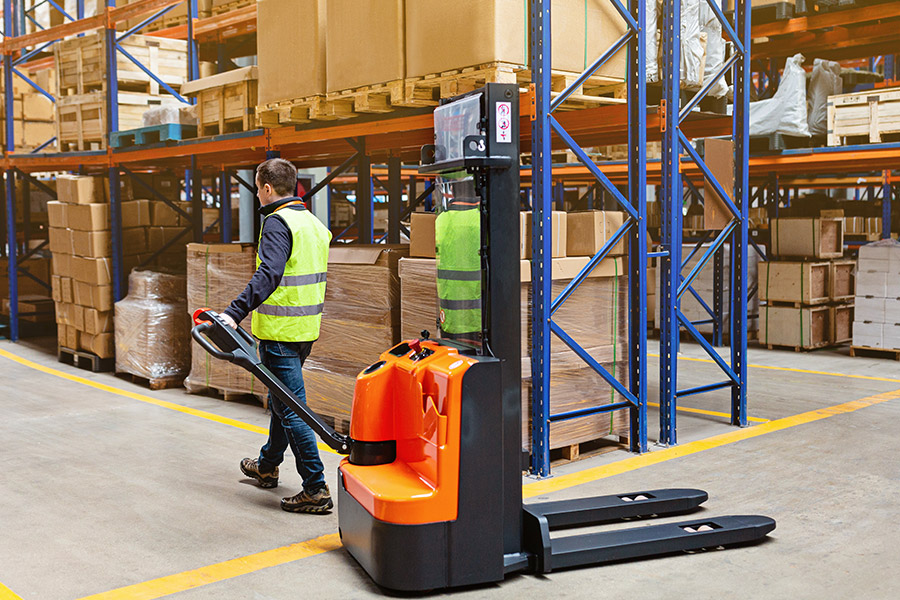
Electric motor hand trucks and rider trucks are the most basic form of an electric forklift. Also known as pallet jacks, most of these vehicles only lift loads a few inches off the ground. Class III trucks are great for moving pallets a short distance or around a small warehouse as long as the intent is to store them low or on the floor. The lift capacity for electric motor hand trucks is typically between 2,000 and 8,000 pounds.
Power pallet trucks (aka, walkie pallet trucks)
These small pallet trucks do not have a cab. Instead, the operator stands either on a platform at the truck’s rear or walks behind it (some motorized pallet jacks have seats). The driver uses a long handle and hand control to steer and load and unload the vehicle. These machines are an evolution of manual pump trucks, which require the operator to pump a jack handle to lift loads. A power pallet truck uses an electric battery to lift loads and move the vehicle. The battery also makes it possible to raise the forks higher than a manually powered pallet truck.
Examples of Class III vehicles include Linde Material Handling Class III pallet trucks, UniCarriers Class III electric hand/rider trucks and Jungheinrich Class III walkie stacker forklifts.
Class IV: Internal combustion engine trucks with solid/cushion tires
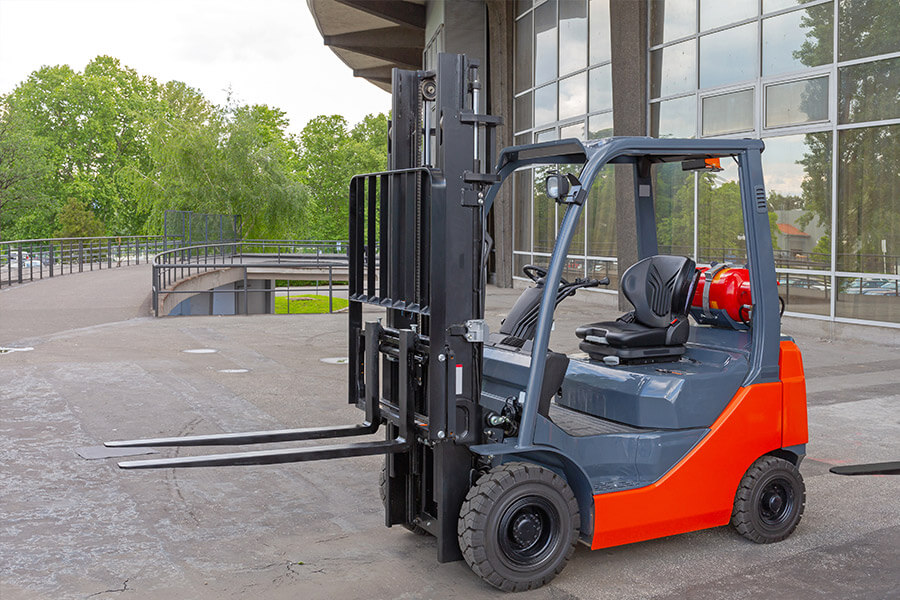
Class IV forklifts resemble Class I trucks, except they are powered by diesel, gasoline, liquid propane fuel or compressed natural gas. Class IV vehicles run on cushion tires made of smooth, solid rubber fitted around a metal band. Cushion tires are only used on even floors.
So, even though a Class IV forklift emits exhaust fumes, it is primarily a counterbalanced indoor forklift. Some Class IV vehicles can operate outdoors, but only on a smooth, paved surface. A warehouse manager would choose an internal combustion engine truck over one with an electric motor because of a lack of space for recharging stations or a small operation that can’t fit recharging downtime into a busy, around-the-clock schedule.
The weight capacity of Class IV trucks ranges from 3,000 to 15,000 pounds. However, some specialized models can support five times that maximum amount.
Class IV models include Mitsubishi Forklift Trucks Class IV, Caterpillar Lift Trucks Class IV and Toyota Material Handling Class IV internal combustion forklifts.
Class V: Internal combustion engine trucks with pneumatic tires
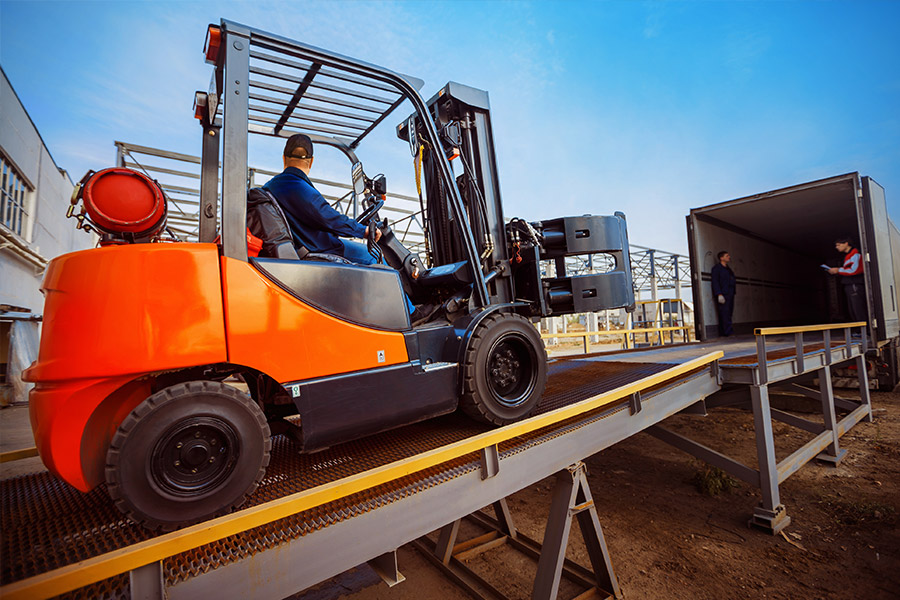
A Class V vehicle is predominately an outdoor forklift. These forklifts can generally lift between 3,000 and 55,000 pounds. Like Class IV trucks, diesel, gasoline, liquid propane fuel or compressed natural gas power Class V forklifts. They also look similar and are usually counterbalanced. The main difference between the two classes is the tires.
Pneumatic tires are filled with pressurized air (the tires on your personal vehicle are likely pneumatic). Pneumatic wheels are ideal for job sites with uneven terrains because they provide superior shock absorption compared to cushion tires. This shock absorption offers a more comfortable ride for forklift operators and avoids hammering blows to the complex inner working of the equipment. Class V is likely the first choice when a foreperson needs everyday forklifts for dirt and gravel areas.
Forklift models names for Class V include Crown Equipment Corporation Class V pneumatic tire forklifts and Mitsubishi Forklift Trucks Class V.
Class VI: Electric and internal combustion engine tractors
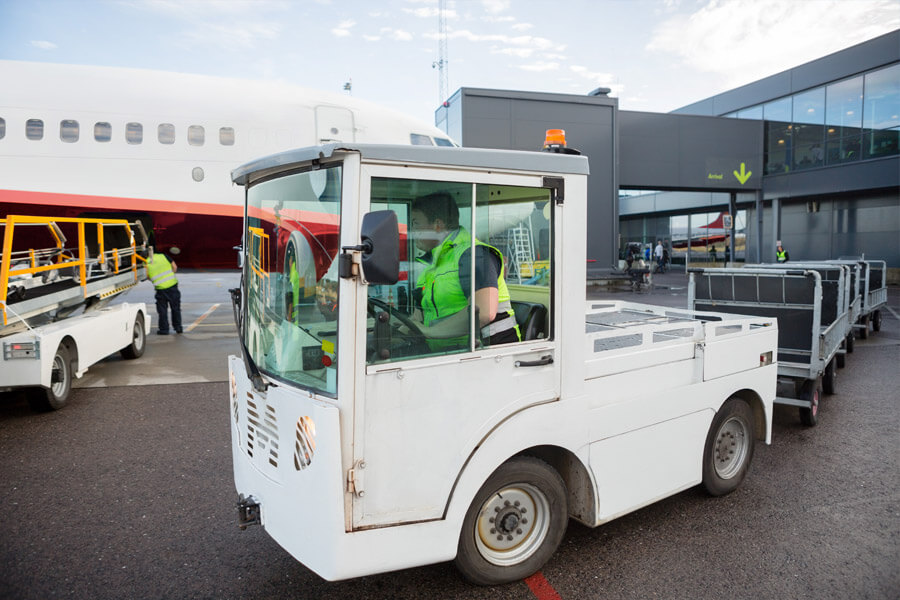
Have you ever looked out of those massive windows at an airport and watched as your luggage bounced off the cart without anyone else seeing it? Well, the vehicle pulling that cart was a Class VI truck. Other examples include narrow flatbed trucks that tool around warehouses (known as burden carriers) and tractors used as farm equipment.
Class VI trucks are known as “tuggers” because they pull cargo instead of lifting it. In general, the biggest of these machines can pull approximately 55,000 pounds. They are equipped with internal combustion engines for outdoor use and battery-powered electric motors when used primarily for work indoors.
An example of a Class VI models is the Jungheinrich Class VI tugger.
Class VII: Rough terrain forklift trucks
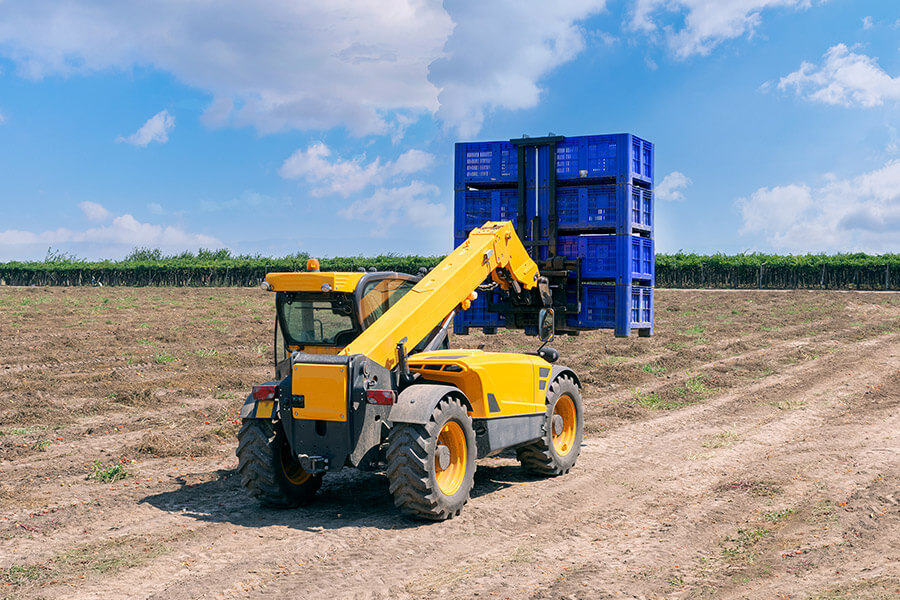
A Class VII forklift is exclusively a forklift for dirt and gravel areas. These machines are used at auto recyclers, lumber yards and construction sites. Class VII vehicles typically have at least two large, flotation-like pneumatic tires with thick treads to help maintain stability on uneven surfaces. They are almost always diesel-powered and have either a two- or four-wheel drive suspension.
Class VII vehicles generally lift between 6,000 and 12,000 pounds, with some machines lifting as much as 60,000 pounds. The trucks offer a wide variety of masts, including some that telescope to provide greater reach. Because Class VII trucks operate on uneven terrain, they are carefully counterbalanced to avoid accidents.
Models of Class VII vehicles include Caterpillar Lift Trucks Class VII diesel forklifts and Anhui HELI Class VII heavy forklifts.
In addition to being OSHA classified, another thing all 7 different types of forklifts have in common is the need for power. Texas Motive Solutions has all the forklift batteries and forklift accessories you need to keep your fleet running. Also, if you have any issues or concerns about your forklift batteries, our forklift repair service team has the expertise to ensure your equipment operates at peak performance. Please call us at (888) 316-2459 or fill out this form.

